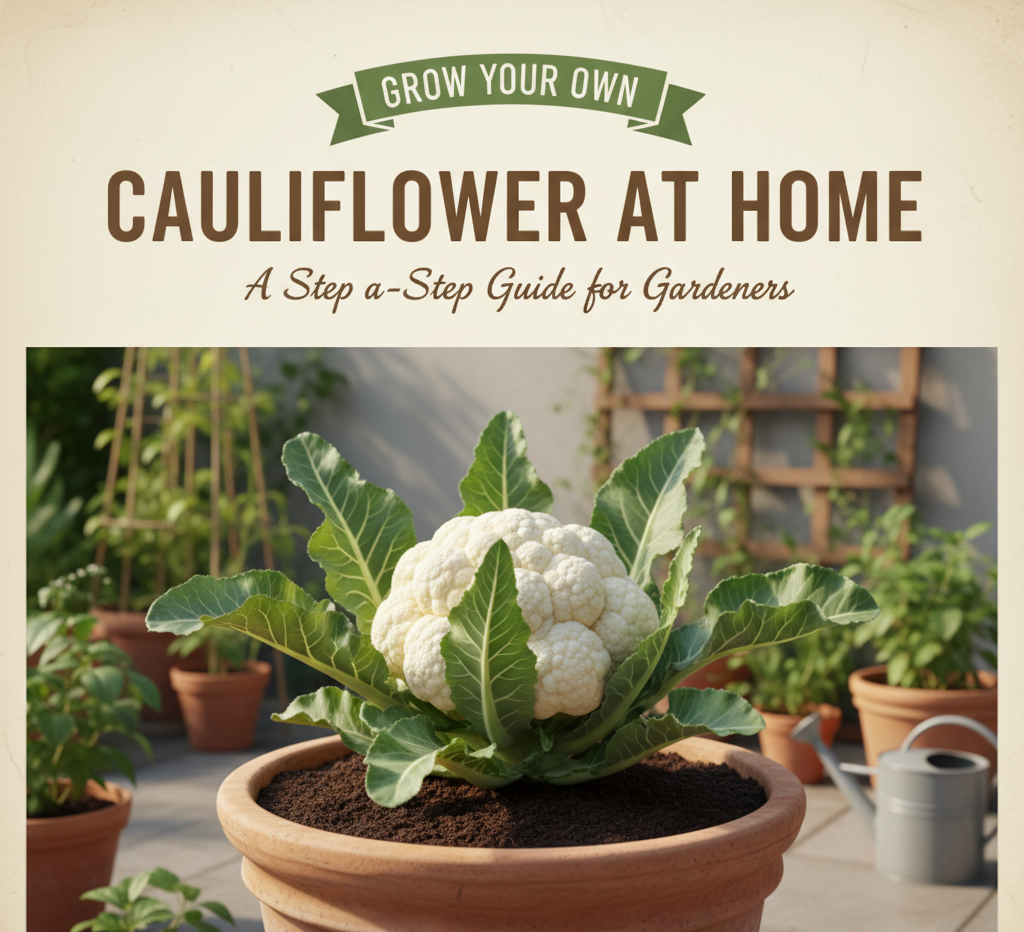Cauliflower Gardening: How to Grow Healthy, Nutritious Cauliflower at Home

Cauliflower is a cool-season vegetable that has become a kitchen favorite for its versatility and nutrition. From comforting curries to low-carb rice alternatives, this member of the brassica family is packed with vitamins, minerals, and antioxidants. The best part? You can grow cauliflower right at home with a little patience and the right care.
Best Conditions for Growing Cauliflower

Soil: Loose, fertile, and well-drained soil rich in organic matter is ideal. Add compost before planting for healthy growth.
pH: Slightly acidic to neutral soil (pH 6.0–7.0) supports better nutrient absorption.
Sunlight: Needs full sun for at least 6 hours a day.
Temperature: Thrives in cool weather between 15–21°C (59–70°F). Prolonged heat can cause small or loose heads.
Planting Cauliflower

Sow directly or transplant: Seeds can be sown directly into the soil or started indoors and transplanted once seedlings are 4–6 weeks old.
Spacing: Plant seedlings 18–24 inches apart, with rows spaced about 2–3 feet apart. This gives each plant room to form a full head.
Fertilization: Use compost or balanced organic fertilizer. Avoid too much nitrogen, as it encourages leaf growth instead of head formation.
Care and Maintenance

Watering: Cauliflower needs consistent moisture—around 1–1.5 inches per week. Uneven watering can stress the plants and affect head quality.
Mulching: Mulch helps retain soil moisture and keeps roots cool.
Blanching: For white curds, tie the outer leaves over the developing head when it reaches about 2–3 inches. This protects it from sunlight and keeps it tender.
Common Problems and Solutions
Pests: Watch for aphids, cabbage worms, and flea beetles. Use neem oil or row covers to protect young plants.
Bolting: High temperatures or water stress can cause plants to flower early. Plant at the right season to avoid this.
Poor head formation: Usually caused by inconsistent watering or nutrient imbalance. Regular care helps prevent it.

Harvesting Cauliflower

Cauliflower is ready to harvest 70–90 days after planting, depending on the variety. The heads should be compact, firm, and 6–8 inches across. Use a sharp knife to cut the head along with a few surrounding leaves for protection.
Storing Cauliflower
Freshly harvested cauliflower can be stored in the refrigerator for up to 2 weeks. For long-term storage, blanch and freeze florets to preserve flavor and nutrients.
Final Thoughts
Growing cauliflower at home may require attention, but the reward is worth it. With the right soil, consistent care, and cool weather, you can enjoy fresh, organic cauliflower straight from your garden. Not only is it healthier and tastier than store-bought, but it also gives you the joy of harvesting your own food.
Get premium seeds, organic fertilizers, and gardening essentials at Green Paradise. Start your gardening journey today and harvest freshness from your garden!

